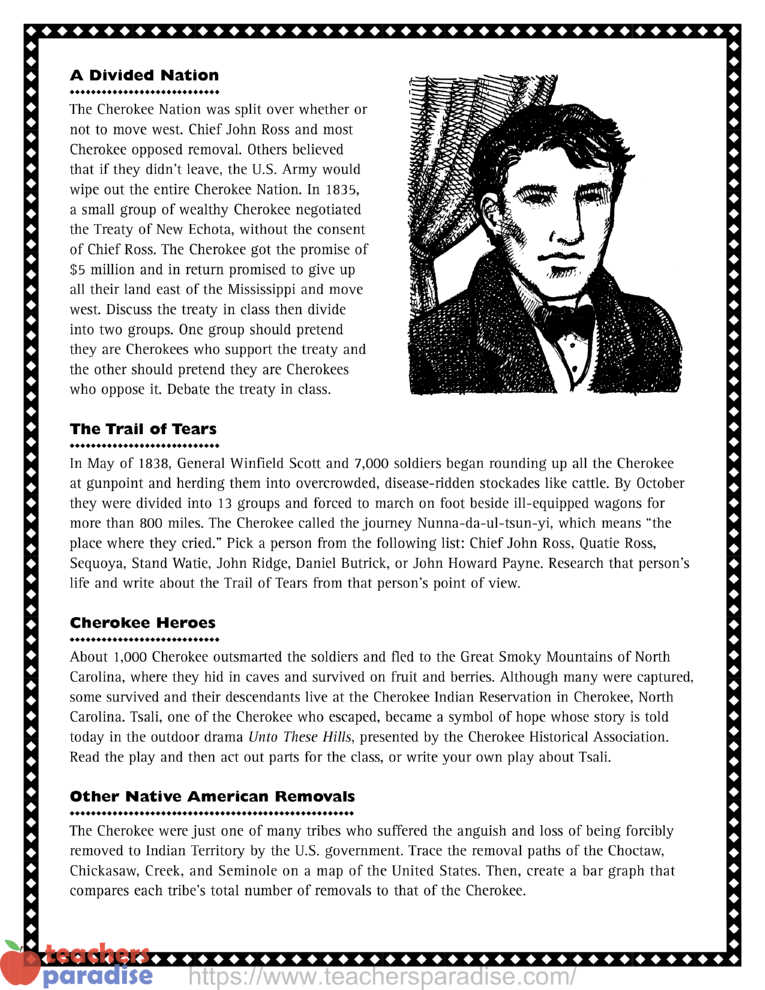Cherokee Nation
A Divided Nation
The Cherokee Nation was split over whether or not to move west. Chief John Ross and most Cherokee opposed removal. Others believed that if they didn’t leave, the U.S. Army would wipe out the entire Cherokee Nation. In 1835, a small group of wealthy Cherokee negotiated the Treaty of New Echota, without the consent of Chief Ross. The Cherokee got the promise of $5 million and in return promised to give up all their land east of the Mississippi and move west. Discuss the treaty in class then divide into two groups. One group should pretend they are Cherokees who support the treaty and the other should pretend they are Cherokees who oppose it. Debate the treaty in class.
WORKSHEET & Sample PDF Activity
Sample PDF Activity
The Trail of Tears
In May of 1838, General Winfield Scott and 7,000 soldiers began rounding up all the Cherokee at gunpoint and herding them into overcrowded, disease-ridden stockades like cattle. By October they were divided into 13 groups and forced to march on foot beside ill-equipped wagons for more than 800 miles. The Cherokee called the journey Nunna-da-ul-tsun-yi, which means “the place where they cried.” Pick a person from the following list: Chief John Ross, Quatie Ross, Sequoya, Stand Watie, John Ridge, Daniel Butrick, or John Howard Payne. Research that person’s life and write about the Trail of Tears from that person’s point of view.

Cherokee Heroes
About 1,000 Cherokee outsmarted the soldiers and fled to the Great Smoky Mountains of North Carolina, where they hid in caves and survived on fruit and berries. Although many were captured, some survived and their descendants live at the Cherokee Indian Reservation in Cherokee, North Carolina. Tsali, one of the Cherokee who escaped, became a symbol of hope whose story is told today in the outdoor drama Unto These Hills, presented by the Cherokee Historical Association. Read the play and then act out parts for the class, or write your own play about Tsali.
Other Native American Removals
The Cherokee were just one of many tribes who suffered the anguish and loss of being forcibly removed to Indian Territory by the U.S. government. Trace the removal paths of the Choctaw, Chickasaw, Creek, and Seminole on a map of the United States. Then, create a bar graph that compares each tribe’s total number of removals to that of the Cherokee.



























